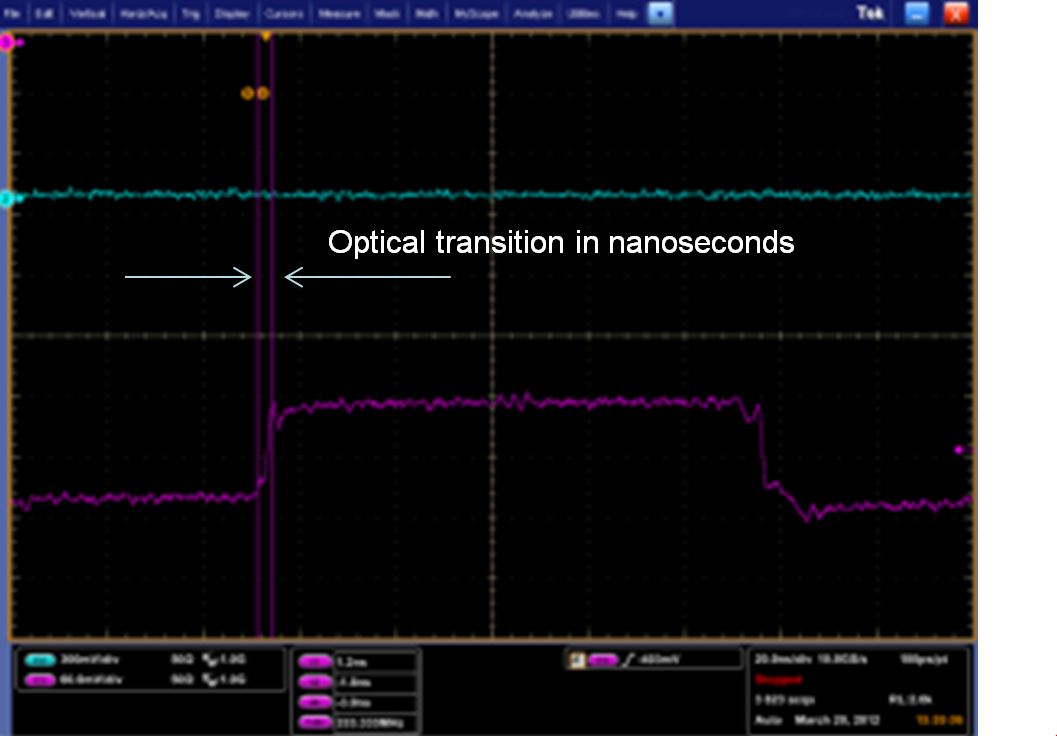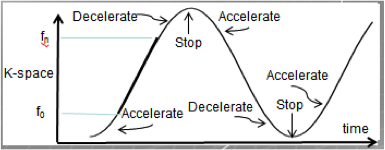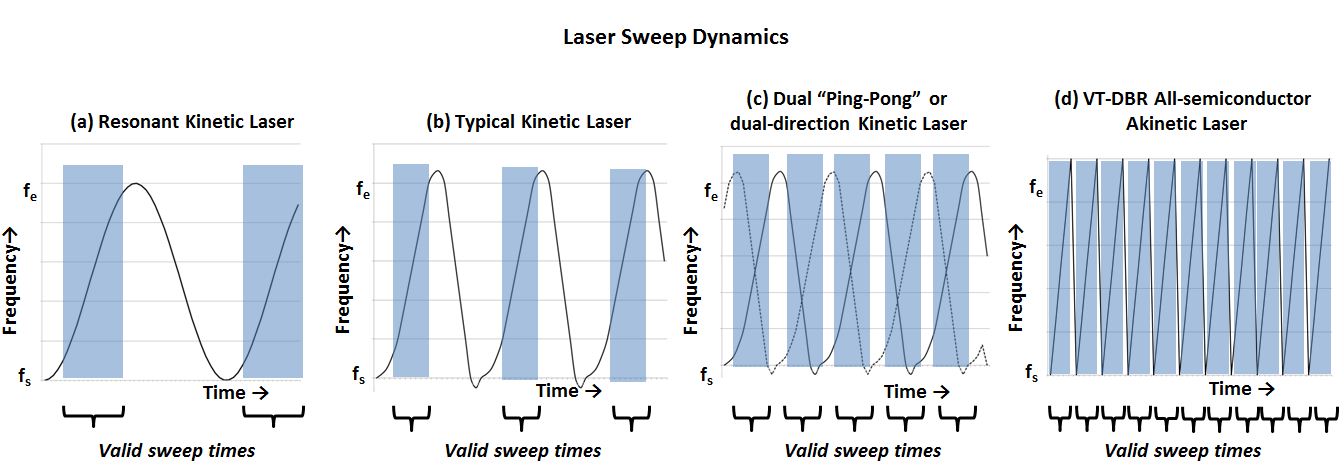High-Speed Sweeping |
. . . Why High-Speed Sweeping Matters |
|---|---|
|
|
400k, 200k, 100k, 50k, 20k, 10k, 4k, 2k sweeps per second; Adjustable to Any Speed 2k to 400k sps |
|---|
|
Going from any wavelength to any wavelength with the Insight laser takes only single-digit nanoseconds. The initial laser module can drive the laser to 400,000,000 wavelength points per second. This yields roughly 400,000 sweeps per second at 1,000 points per sweep, or 2,000 points at 200,000 sweeps per second. Unlike mechanically-driven lasers, the speed is software controlled. In the OCT version of the laser, any speeds over a range from 2,000 to 400,000 sweeps per second can be selected. Key specs are measured at 200,000 sweeps per second and 2,000 measurements per sweep. During development the laser was demonstrated at 1,000,000 sweeps per second, thus ensuring that a growth path with akinetic technology for faster future sweep rates to enable fast, high-resolution 3D imaging. Click here to learn more about the Insight laser's technology. |
95% Duty Cycle (adjustable); Nanoseconds Between Sweeps |
|
|---|---|
|
The Insight laser can go from any wavelength to any wavelength in single digit nanoseconds. That means that the time from the end of a sweep to the beginning of a sweep is very short, allowing for very high duty cycle. |
|
|
High-speed scope trace showing full optical transition in 2.5 ns |
|
|
Since duty cycle is software controlled, it is adjustable. You can set the duty cycle to almost any value from 0% to 95%. |
|
|
Historically, achieving a sweep with a swept-wavelength laser required generating and dissipating momentum in a mechanical tuning mechanism. Kinetically-tuned lasers must start moving from an initial state, accelerate developing momentum, maintain that sweep rate for the useful part of the sweep, then decelerate, stop, reaccelerate, and so on. |
|
|
The akinetic structure of the Insight laser eliminates the acceleration/deceleration experienced with other lasers
|
|
|
For some kinetic lasers, portions of this cycle can be expedited but not eliminated. The result is that only a portion of the sweep is actually useful for imaging. In the past, delays in the data acquisition system might have made this delay inconsequential because it took time to get the data transferred. In today’s data acquisition however, you can measure virtually continuously, so the very high duty cycle afforded by the Insight laser can increase total throughput and imaging speed. |
|
|
Duty cycle is up to 90% |
Measurement Rate to 400MHz* |
|---|
|
The core triggering rate of the laser is 400MHz. This means you can do any of the following:
Up to 400 kHz @ up to 1,000 points The measurement itself can be adjusted down from 400MHz. Accessible rates include 400, 200, 133, 100, 80, 66, 50, 44, and 40 MHz. As discussed in the electronic k-clock section, the laser provides the triggers for your data acquisition system. Learn more about the electronic k-clock and triggering jitter in the linearity section. |






